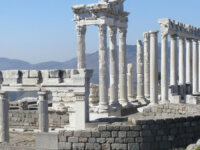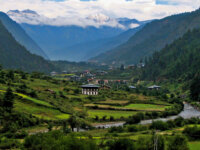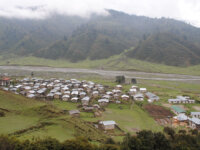TURKEY – In Turkey, coffee is brewed by burying a coffee pot called “cezve” with a long handle into hot sand over an open flame or an electric stove. It’s Turkish Sand Coffee.
In 2013, the United Nations Educational, Scientific, and Cultural Organization (UNESCO) recognized Turkish coffee culture and tradition as an intangible cultural heritage representative of humanity. The method of preparing and enjoying coffee in this country has many unique features that set it apart from the rest of the world.
One of these unique features is Turkish sand coffee. When brewing, coffee grounds and water are combined in a metal pot called a “cezve” with a specialized long handle. The person brewing the coffee places the cezve pot into hot sand, over an open flame or an electric stove. The heat from the surrounding sand causes the coffee to froth rapidly.
Once the coffee froths, it is poured into a small cup to serve guests. Afterward, the cezve pot is buried in the sand 3-4 more times without adding more water. The coffee grounds settle at the bottom, making this brewing method a hallmark of rich and robust Turkish coffee. The brewing temperature can also be adjusted based on the depth of the cezve pot with its copper base in the sand.

Traditional Turkish coffee is prepared by boiling water with hot sand. Image: Adobe Stock.
The small cup used to serve Turkish coffee from the cezve is called a demitasse, similar in size to an espresso cup. The word “demitasse,” of French origin, means “half-cup,” and it is the smallest type of coffee cup. In Turkey, people often enjoy their coffee alongside a dessert.
The origin of hot sand coffee in Turkey is ancient, and its exact origins remain a mystery. Domestic scholars believe that it originated from the Ottoman culture, an empire that spanned across Southern Europe, the Middle East, and North Africa from the 14th century to the early 20th century. The Ottoman Empire had its roots in the present-day region of Sogut, which is part of modern-day Turkey, and for over seven centuries, the Ottoman capital remained within what is now Turkey.
From the time of the Ottoman Empire, kings and nobility requested their servants to brew coffee in hot sand. This method ensured even and precise heating compared to direct heating over an open flame, resulting in a smoother and more consistent coffee.
Reading coffee grounds is also a beloved local tradition. After finishing their coffee, people turn their cups upside down to allow the coffee grounds to create shapes and patterns on the saucer. A fortune teller would then interpret these shapes and predict the “customer’s” destiny.
Turkish coffee culture also plays a role in marriage traditions. According to tradition, the prospective groom brings his family to meet the bride’s family and seek their blessings. The future bride prepares coffee for the groom and may add salt instead of sugar to his cup. The groom cannot complain about being “pranked” because it would be considered rude. If the young man can drink the salty coffee without discomfort, it is seen as evidence that the young woman has found a kind-hearted husband.
Video: Insider
Turkish people have a saying, “The memory of a cup of coffee lasts for 40 years,” to describe their coffee-drinking culture.
Turkish sand coffee is distinct from regular coffee, even though they share common ingredients. The different brewing method imparts unique flavors and a distinct richness. Many believe that using a copper pot to heat the coffee in the sand enhances the aroma and richness of the coffee.
Regardless of the brewing method, Turkish coffee generally has the characteristics of being aromatic, rich, frothy, and hot.





















[…] Readmore: The Great Mosque of Hagia Sophia in Turkey – Everything You Need to Know. […]